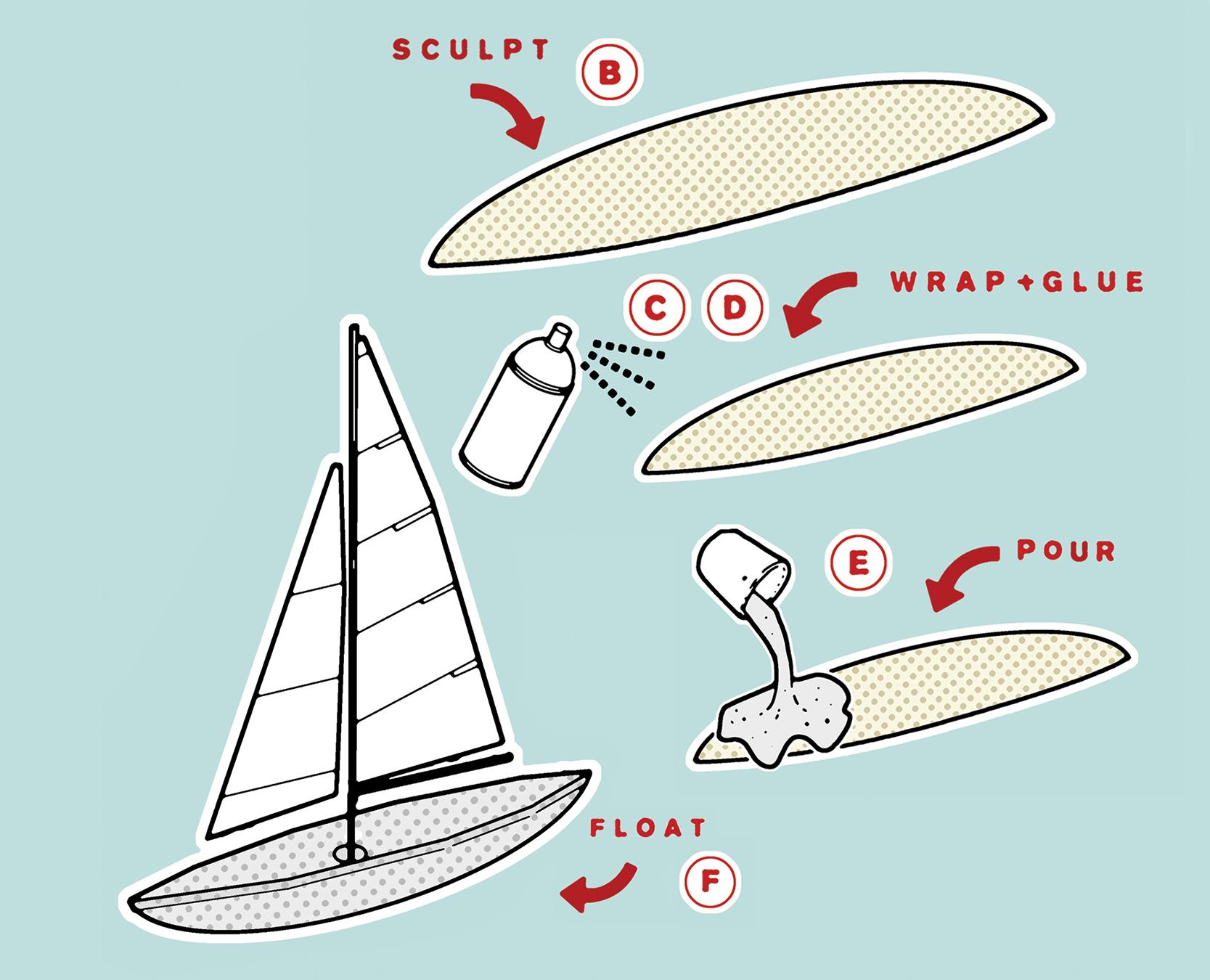


The Greek polymath Archimedes is said to have solved the mystery of buoyancy in a bathtub. Even if the story is apocryphal, his principle isn’t: If an object weighs less than the water it displaces, it won’t sink.
Even concrete can float. Materials scientist Joseph-Louis Lambot built a concrete dinghy featured in the 1855 World’s Fair. And to conserve steel during World War II, the U.S. made 24 concrete ships. Today, college teams race custom boats at an annual concrete canoe competition. A team from the University of Wisconsin, Madison, for example, used concrete mixed with tiny air-filled glass spheres to build a 20-foot-long vessel that supports a four-member crew.
But you don’t have to be an engineer to build a stony ship. The Madison-based team and one from the University of California, Berkeley, helped devise this mini-boat project for Popular Science. All that’s required is a trip to a home-supply store and a safe place to set sail—just in case your craftsmanship stinks, er, sinks.
Materials
1. 10-lb. bag Portland type 1 cement
2. 20-lb. bag sand
3. ½ gallon water
4. Wheelbarrow (or large sturdy container)
5. Two feet of 3-inch-wide-by-1.65-inch-thick polystyrene foam insulation
6. Utility knife
7. Sandpaper
8. Plastic wrap
9. Blow-dryer
10. One 3-foot-long-by-5-inch-wide sheet of ¼-inch-thick plywood
11. Nonstick silicone spray
12. Polyurethane glue
Instructions:
(A) Draw: Lay the largest face of the polystyrene foam on a flat surface. Draw an oblong egg shape on the foam—this will become the inner mold of your canoe.
(B) Sculpt: Cut the shape out of the foam with a utility knife. Then round off one side of the foam by shaving away about ⅛ of an inch at a time from the edges. Sand until smooth.
(C) Wrap: Surround the mold with two layers of plastic wrap. Heat-shrink the plastic so that it clings tightly to the foam using a blow-dryer.
(D) Glue: Saw the plywood to fit the mold. Next, smear polyurethane glue on the sculpted foam’s flat side and put it facedown on the plywood. Press until dry, about two minutes. Coat exposed plywood with silicone spray.
(E) Pour: Mix the cement and sand in the wheelbarrow. Stir well, add the water, and mix until uniform. Slowly pour the concrete over the mold, stopping when you reach your desired thickness (¼-inch max). Let it dry for 21 days, and then sand until smooth.
(F) Float: Your concrete canoe should displace more than its own mass in water. Set sail and make Archimedes proud.
Time: 1 hour to make, 3 weeks to cure
Cost: About $50
Difficulty: 2 out of 5
WARNING: Wear proper safety gear, including gloves, a facemask, and protective glasses. Cement is an irritant, hot plastic can scald skin, and utility knives are sharp—be careful!
This article originally appeared in the October 2013 issue of Popular Science.
